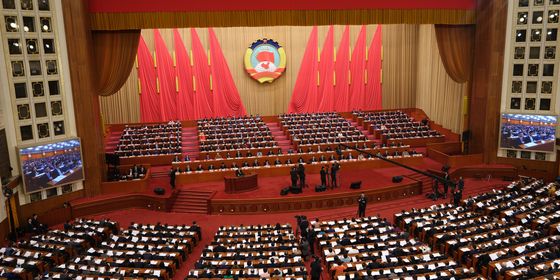Plagued by over-construction, safety issues, and environmental concerns, China’s skyscraper boom may be finally coming to an end
As office workers and shoppers milled around inside Shenzhen’s 356-meter-tall SEG Plaza in May of last year, they suddenly began to feel the floor swaying beneath their feet. “Everyone was scared, they were running around as if in a disaster movie,” a shaken worker from the 55th floor told Jimu News the day of the incident.
But it wasn’t an earthquake that made the world’s 222nd tallest building tremble, and water slosh around in glasses as the tower moved like a cruise liner on rolling waves. Instead, wind captured by two 50-meter antennae atop the skyscraper had led to “vortex-induced resonance,” authorities announced in July, after the building had been closed for weeks of investigation.
Though no one was harmed by the swaying, and the building formally re-opened to businesses and the public on September 8, the incident marked a symbolic end to Chinese cities’ skyward building spree that saw the country go from completing the Guangzhou Baiyun Hotel, the Chinese mainland’s first inhabitable building over 100 meters tall, in 1978, to having the most skyscrapers in the world by 2007.
“The SEG Plaza shaking incident made people reflect on some of the negative content behind high-rise buildings,” says Yan Yuejin, research director of E-house China Research and Development Institute, a real estate think tank, citing vacant office space in high-rises, unfinished projects, fire safety concerns, and environmental issues.
On July 7, less than two months after the SEG Plaza incident, new regulations released by the National Development and Reform Commission placed a nationwide ban on the construction of new towers over 500 meters tall, while “strictly restricting” the construction of buildings over 250 meters high. The Ministry of Housing and Urban-Rural Development (MOHURD) also stated that cities with a population under 3 million people were forbidden from building towers over 150 meters tall, and mandated that local governments conduct safety inspections of their existing tall buildings.
These restrictions on height will help end the “blind pursuit of high-rises that ignores the practicality of buildings” according to Yan, who argues some towers have been built as symbols of political achievement, rather than for sound economic reasons.
China now leads the world in most skyscraper rankings according to the Council for Tall Buildings and Urban Habitat (CTBUH), a non-profit industry body based in the US, with 2,680 buildings over 150 meters tall, 912 over 200 meters, and 101 over 300 meters. Since the Baiyun Hotel in 1978, nine buildings have been named the tallest on the Chinese mainland. Nine cities in China had skyscrapers over 200 meters tall by 1998, and annual completion numbers exceeded 10 for the first time in 2006, before an explosion of construction in the 2010s.
The Sky’s the Limit: How China Fell Out of Love With Skyscrapers is a story from our issue, “Sports for All.” To read the entire issue, become a subscriber and receive the full magazine.













